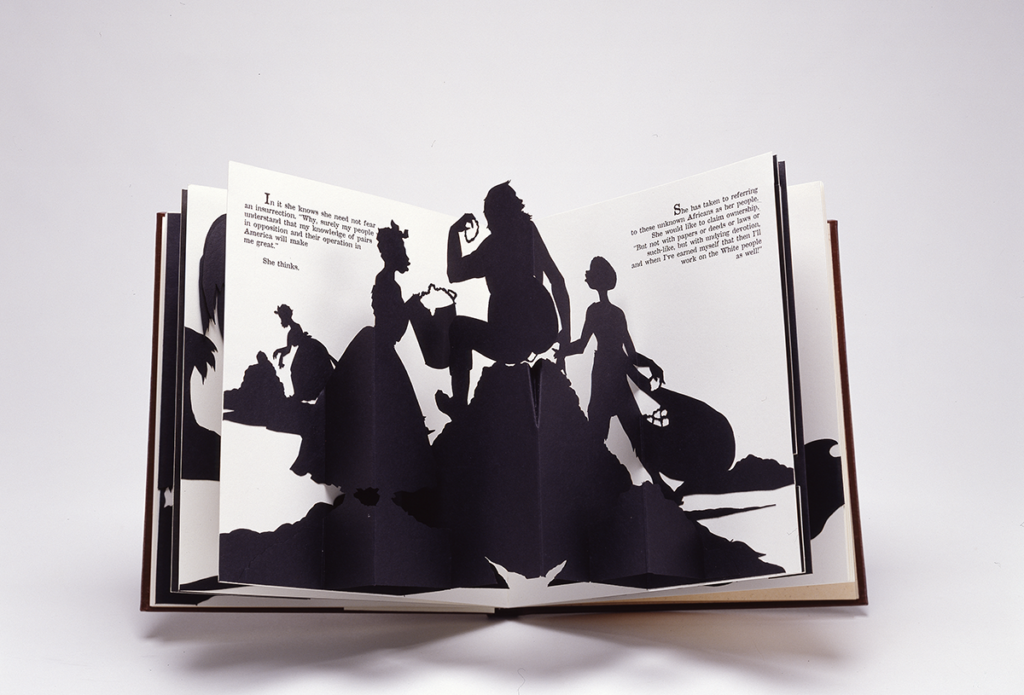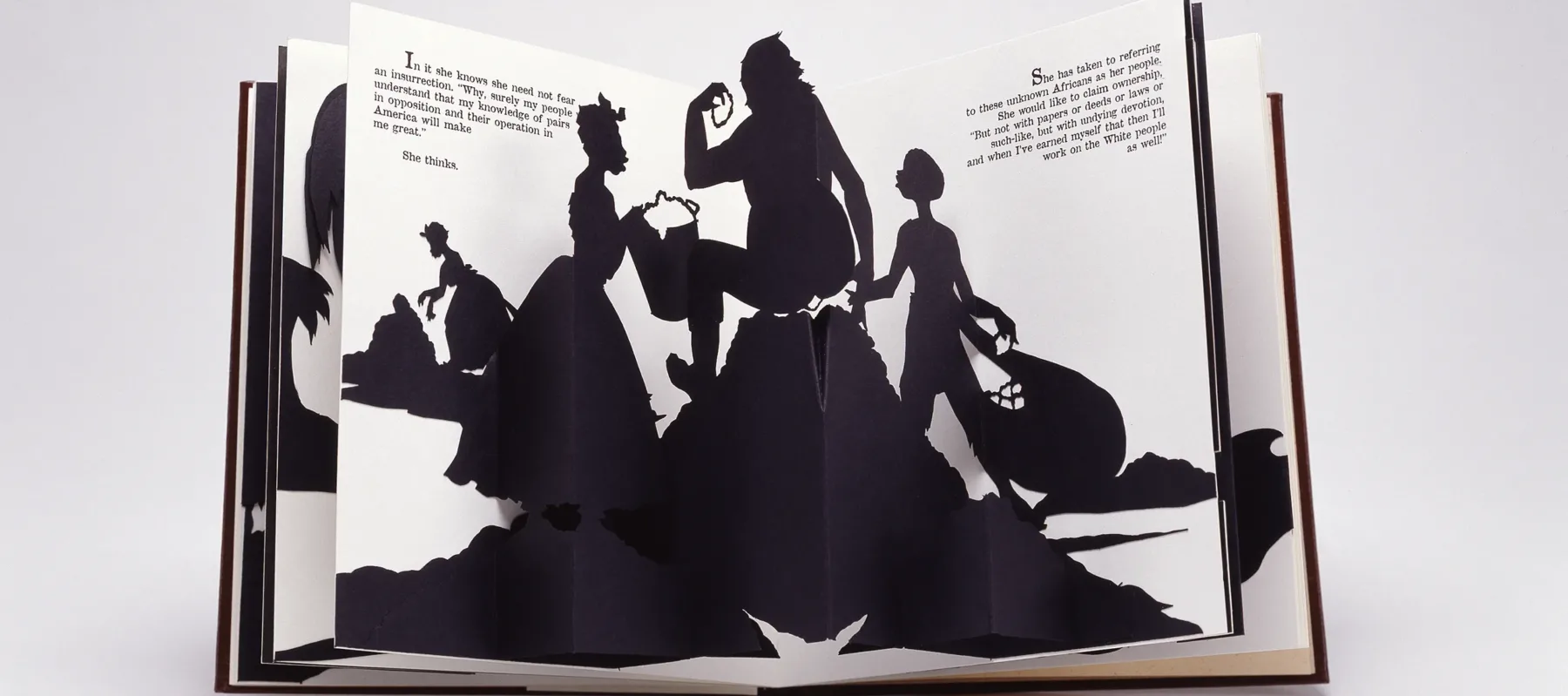Multidisciplinary artist Kara Walker (b. 1969) candidly investigates topics of race, gender, sexuality, and violence. While best known for her panoramic, cut-paper silhouettes, she has also produced large-scale sculptural installations, videos, paintings, and shadow puppets that address the history and psychological impacts of American slavery and racism.

Share your favorite women artists working for racial justice on Instagram, Twitter, and Facebook using the hashtag #5WomenArtists and tagging @WomenInTheArts.
1. All Consuming
Walker does not believe that her provocative and historically inspired art “deals with history,” but rather that it responds to history. “Embedded in that statement, ‘Kara Walker is dealing with history,’ is this…desire for a hero who can fix this problem of our history and racism,” says Walker in an Art21 interview. “I don’t think my work is actually effectively dealing with history. I think of my work as subsumed…or consumed by history.”
2. Artist/Author
Walker often includes writing and storytelling in her artwork. Her pop-up book Freedom, A Fable: A Curious Interpretation of the Wit of a Negress in Troubled Times (1997), part of NMWA’s artists’ book collection, tells the story of a former enslaved woman. And in 2001, Walker created a series of short, diary-like writings on index cards that were exhibited in American Primitive at Sikkema Jenkins & Co. One card reads, “We are Superman. Venus, Oprah, Toni, Angela, Tina, Serena, Kara…We End in Vowel sounds and Our names Last Forever when you speak them aaah!”
3. Socially Aware Curator
In 2006, the Metropolitan Museum of Art invited Walker to curate an exhibition using its permanent collection. Walker titled the show After the Deluge as a response to the horrors of Hurricane Katrina and its aftermath. She juxtaposed paintings of churning water, including Winslow Homer’s Gulf Stream (1899), with her own print portfolio to address the external forces that shape and transform Black life, including “the sea, the slave trade, and the failure of retaining walls.”
4. Illustrating a Libretto
In 2011, Walker’s friend Alicia Hall Moran was cast as Bess in the opera Porgy and Bess. Walker sat in on run-throughs to sketch the show and was eventually asked to create illustrations for a limited-edition libretto. The resulting sixteen lithographs are “…more an homage to the feeling of the music” rather than addressing the show’s stereotypical portrayals of African Americans. Walker notes that Porgy and Bess “lives in a murky place in popular culture and personal reflection.”
5. Unsweet History
In 2014, Walker and her team built the monumental sugar sculpture A Subtlety, or the Marvelous Sugar Baby in the Domino Sugar Factory in Brooklyn. The giant sphinx was a monument to the slaves whose labor built the sugar industry. In the heat of the summer, the sphinx and the smaller life-size sculptures of children began to melt. “I really love the fact of these figures melting and dripping,” said Walker. “[The figures and the factory are] still sort of weeping the substance.”
